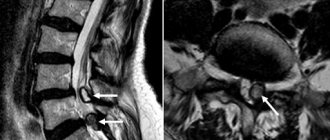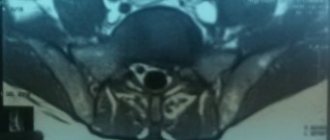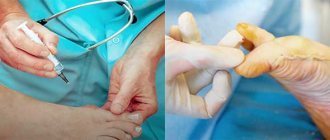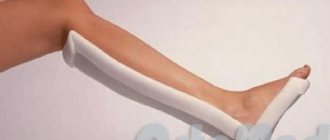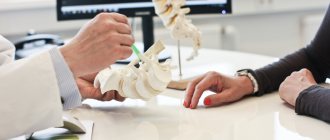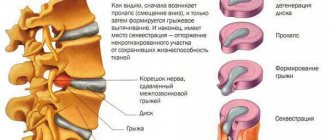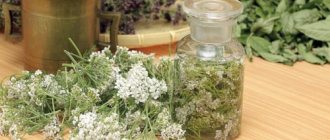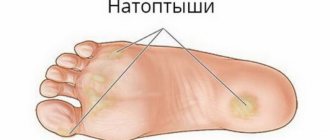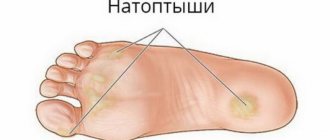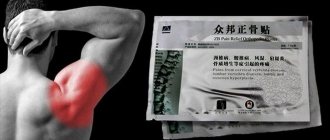The only cause of calluses on the toes is rubbing from the walls and straps of shoes. But there’s a lot of trouble from this! How to avoid calluses and what to do if your fingers are already bleeding? Now we will tell you about it.
- Calluses on the toes: what they are and where they “live”
- Patches for calluses on fingers: pros and cons
- TOP 5 products for protection against calluses
- External remedies - creams and ointments for dry calluses
- Treatment of calluses on the toes with folk remedies
- Laser removal of calluses on fingers
- “Anti-callus” shoes: 5 rules for living without calluses
- Conclusion: what to do with calluses
Calluses on the toes: what they are and where they “live”
Before you deal with calluses on your toes, you need to determine their type. We will conditionally divide them into three groups: dry, wet and core.
Dry calluses are hard, compacted areas on the skin. They are formed when the skin is rubbed against the walls of shoes for a long time and methodically. This is a kind of protection of the delicate layers of skin from friction.
Wet calluses are blisters on the skin filled with fluid. Compared to dry keratinized calluses, they are more painful. Particularly “pleasant” sensations arise when such a callus bursts. The liquid flows out, and an inflamed “mush” forms in place of the callus. And it's dangerous! Firstly, an infection can get into the skin lesion. And secondly, if you don’t free your foot from shoes or protect a vulnerable spot, the burst callus will be erased into “meat.”
A callus is a type of hard callus that appears if a dry callus is left untreated. But there is one nuance: the callus is called that because it has a root. It digs into soft tissue and causes excruciating pain when walking and pressing.
Calluses can be located in different areas of the toes: on top (on the phalanges and joints), on the side, on the lateral rollers of the big toes, in the spaces between the toes and below, on the pads.
What are core calluses?
Callus is one of the types of dry calluses. A distinctive feature of such calluses is the formation of a “root” that grows inside the soft tissue. The constantly deepening part of the dead epithelium compresses the nerve endings, causing first discomfort and then pain, and also allows the callus to quickly recover after attempts to remove it. Externally, the callus has the appearance of a small dense tubercle, on the surface of which a pinpoint depression may be visible.
Favorite localization of formations:
- finger pads;
- the part of the foot that bears most of the load when walking in high heels;
- heels;
- spaces between the toes.
The upper layers of such calluses are easily removed, but this does not bring significant improvement to the condition.
Patches for calluses on fingers: pros and cons
What is the most popular remedy for calluses? That's right, a band-aid! The patches are advertised, they can be bought both at the pharmacy and in almost any store, and they also cost mere pennies. But are they as good as they say in advertising? Let's find out!
Plasters can be divided into three groups: bactericidal, therapeutic and special for wet calluses.
Germicidal patches
An accessible and cheap option, but bactericidal patches do not treat calluses, but rather serve as a safety cushion between the painful area and the wall of the shoe. Well, they protect calluses (especially wet ones) from bacteria. They will be very useful if:
- Your wet callus has burst and you need to get home;
- You know your weak spots on your feet and want to protect them from friction;
- You've slightly rubbed your toe and are afraid that the callus will burst.
Therapeutic plasters
Callus patches help get rid of calluses. They contain inclusions of salicylic acid and other active ingredients that soften dry calluses and rough skin on the fingers and feet. They are suitable if:
- You have dry calluses on your fingers;
- The skin on the toes is rough and tough;
- Toes constantly suffer from friction in shoes.
Compeed patches for wet calluses
Special patches for wet calluses from the Compeed brand resemble elastic oval “pancakes”. This patch forms a shell over the wet callus, which protects against pain from friction and contact with the walls of the shoe, isolates the wound from dirt, dust and germs, and also heals the inflamed area. This is ideal if:
- You rubbed your toes until “bubbles” formed;
- The wet callus has burst and hurts like hell;
- You don't want to change the patch often - Compeed stays on the skin for 24 hours.
Pros and cons of patches
Regardless of whether the patches are medicinal or bactericidal, they have advantages and disadvantages.
Benefits of callus patches
If it weren't for the benefits, patches wouldn't be such a popular option for protecting against calluses. And that's what's good about them.
- It is cheap. Plasters can be purchased individually from 1 ruble per piece.
- Easy to use: stick it on and go!
- They take up little space: you can carry them with you in your cosmetic bag or wallet.
- They provide targeted protection and come in different sizes and shapes: you can seal the phalanx of the little finger with a plaster or wrap the entire thumb.
Disadvantages of callus patches
Adhesive plasters also have disadvantages. We have identified two:
- The patch is a one-time product; after quickly “wearing out” the old patch, you need to stick a new one;
- Moisture can cause the adhesive base of the patch to peel off, which is not very convenient in hot weather or when your feet sweat excessively.
TOP 5 products for protection against calluses
Another way to prevent calluses on your toes is to use special tools. They will not cure existing calluses, but will protect painful areas from friction and pressure, and will also prevent the walls of the shoes from “callousing” the skin of the fingers.
Finger tube “Cut it yourself”
The protective tube is made of cotton fiber and has a strip of soft silicone inside it. These finger pads will cover a potential or already rubbed callus and protect the vulnerable spot from mechanical damage. The tube can be divided into lengths suitable for your fingers.
Silicone finger caps
Silicone toe caps are suitable for protecting all toes except the big toe. They consist of hypoallergenic medical silicone, which is impregnated with mineral oil. The impregnated gel not only protects the skin from damage, but also moisturizes it.
Gel anti-callus socks
These silicone half-toes are cup-shaped pads that fit over all the toes and also cover the “bones” of the big and little toes. They protect the metatarsal part of the foot and toes from pressure and friction in the shoe. These socks do their job especially well in closed heeled shoes.
Bursoprotectors
Bursoprotectors with an interdigital septum protect the inflamed “bone” and the second finger, if it is hammertoe, from friction.
Silicone correctors for 5 toes
5 toe correctors physically separate all five toes from each other and protect the delicate skin between the toes from friction.
External remedies - creams and ointments for dry and wet calluses
If the appearance of calluses cannot be avoided, they can be cured. There are special creams and ointments for this. These remedies can be aimed at softening rough and dry calluses or healing and disinfecting wet calluses. Choose for yourself!
Remedies for dry calluses actively soften the skin, including keratinized calluses. After using them, it will not be difficult for you to remove roughness without damaging the deeper layers of the epidermis. And this is also the prevention of core calluses!
Foot cream “Tiger Eye – Ortho, dry calluses”
This cream is rich in natural substances, so in addition to combating dry calluses, it will help tidy up the skin of the feet. Just look at its properties:
- Nourishes the skin, protects against cracks;
- Relieves inflammation;
- Removes bacteria from feet.
This cream softens rough skin in 1-3 days, after which it should be carefully removed with a pumice stone or a special scraper.
Foot cream “Versana” with lemon and lanolin
This cream, among other things, has bactericidal and anti-inflammatory properties. It also saturates the skin with vitamins A, B, P and C. A small bonus is the presence of a dispenser in the bottle!
Cream-balm “Corn”
This product is a delicate peeling that eliminates calluses and corns. It contains the enzyme keratolin, which removes dead skin cells and stimulates the “birth” of new ones. Unlike acids and other aggressive peels, keratolin does not injure the skin. The skin becomes smooth, soft and fresh. And a whole complex of natural vegetable oils and extracts will help to consolidate the effect.
The second group of products is more suitable for combating wet calluses. The components of these creams and ointments heal wounds and injuries, relieve inflammation and have an antibacterial effect.
Healing cream “Active mumiyo” with tea tree and wheat germ oils
This cream heals all kinds of damage to the skin: burst calluses, wounds, scratches, cracks and microtraumas. It also restores the skin during chafing and diaper rash.
Foot gel "Doctor Belyakov - Ginseng Plus"
Actually, this is a gel for foot fungus, but its active ingredients, ginseng and elecampane roots, will also cope well with the consequences of wet calluses:
- Soften and rejuvenate the skin of the feet;
- Heal microcracks and wounds from burst calluses;
- Prevents the appearance of corns.
Gel-balm for feet “OvisOlio – Sheep oil”
This balm gel can be used even if calluses are not your problem. It has a complex effect on the condition of the legs:
- Has an antiseptic, healing and anti-inflammatory effect;
- Provides skin cells with a “killer” dose of tonic substances;
- Fights foot fungus;
- Has a deodorizing effect.
Treatment of calluses on the toes with folk remedies
You can get rid of calluses and corns on your toes using folk remedies. All of them are available, cheap and will probably be found in every home. Let’s immediately make a reservation that these products are only suitable for combating rough skin, dry calluses and corns.
Garlic - apply to steamed dry calluses
Pre-steam your feet in a warm bath. Then prepare the garlic “medicine”: squeeze out the juice or grate a couple of cloves of garlic on a fine grater to make a paste. Soak gauze in juice or apply garlic paste on it and apply to steamed calluses overnight. Apply these compresses to dry calluses for 7-10 days.
Onion - to soften rough skin on the feet
Cut the onion and rub its juice onto a dry callus or rough area of skin. Bandage your leg and walk with this lotion for several hours. After 10 days, the callus will soften and can be easily removed, and the rough skin will become thin and tender.
Lemon + aspirin - getting rid of calluses in 15 minutes
Prepare the paste: Grind 6 aspirin tablets with lemon juice. Apply the mixture to a rough callus or corn and then wrap your foot in plastic wrap. Apply a hot compress on top - cloth, gauze or towel soaked in hot water. Leave the compress on for 15 minutes, then remove the film, rinse off the paste and rub the rough skin with a pumice stone.
Chamomile baths - for pain relief
Dry calluses occur in places of continuous friction, and this is not only rough skin, but also pain. Warm baths with chamomile decoction will help soften the skin and relieve pain. The decoction is prepared as follows: pour 4 tablespoons of dry chamomile with 1 liter of boiling water and let the decoction brew. After this, take a bath and steam your feet in it for 30 minutes. As a result, the skin will become softer, and pain in injured areas will go away.
Vinegar – fight against calluses + disinfection
Soak a cotton swab in table vinegar and apply it to the rubbed area of skin for a couple of hours. Secure the compress with a bandage. Vinegar will not only soften rough spots, but also disinfect the skin. If the callus is small or medium, vinegar will take care of it in a couple of days!
Aloe + laundry soap - night compresses
Squeeze the juice from the aloe leaf and mix it with laundry soap. In the evening, before going to bed, apply the resulting mixture to dry calluses, cover with plastic on top and leave overnight.
Stages of the procedure
The procedure for removing calluses with nitrogen is performed as follows:
- Before removing a callus, an examination by a doctor is required to confirm the diagnosis and exclude contraindications to cryodestruction, determine the causative factors of callus formation and underlying diseases.
- The cryodestruction process takes place in a comfortable position for the patient, lying on the couch.
- Pain relief during cryodestruction of calluses is possible, but more often it is not performed, since the procedure is quite tolerable and short-term.
- Application of liquid nitrogen is carried out using a cotton swab on a wooden stick, soaked in a solution of liquid nitrogen, or a nitrogen aerosol supplied under pressure through the tube of a cryodestructor apparatus. The duration of cooling, as a rule, does not exceed 60 seconds and depends on the area and expected depth of the callus and the thickness of the skin.
- During the cooling process, the callus area turns white in the form of “frost”; upon thawing, the whitening resolves. For deep calluses and calluses located on thickened skin, repeated application of nitrogen is carried out.
- After the procedure, the skin treated with nitrogen turns red, and a bubble with clear or bloody contents may form.
- As a result of freezing and thawing, destruction processes form in the tissues of the callus; the bladder shrinks to form a crust, which is torn off in the form of a “scab” after 2–4 weeks.
- After properly performed cryodestruction, a scar does not form at the site of the removed callus.
Laser removal of calluses on fingers
Laser can be considered a last resort in the treatment of calluses. Most often, this procedure is resorted to by those who have developed a dry callus, and in its place a core has formed. In this case, it will not be possible to cure the callus on your own, because it has already taken root in the soft tissue.
Before laser callus removal, you should consult a dermatologist. The doctor will conduct an examination, give recommendations and possibly prescribe tests. Laser callus removal is usually indicated if:
- dry callus has developed into a core;
- they cause pain;
- inflammation has begun in the area of the callus;
- rough skin has grown too much;
- cracks form on the callosal area (which may “bleed”)
- calluses look unsightly.
Contraindications for cryodestruction of calluses
Contraindications to the use of liquid nitrogen for the destruction of calluses are:
- Cold intolerance - manifested by the formation of an itchy rash on the skin when exposed to low temperatures (in the cold, when exposed to cold water, when applying an ice cube).
- The presence of allergic rashes, pustular elements or a violation of the integrity of the skin in the area of expected exposure. To use cryodestruction in this case, preliminary treatment of existing rashes is required.
- Insufficiency of arterial circulation in the feet against the background of obliterating atherosclerosis, complications of diabetes mellitus.
- The presence of cryoglobulinemia is a rare disease in which special proteins are formed in the blood (cryoglobulins) at temperatures below 37°C. This condition accompanies various vasculitis - vascular inflammation, Raynaud's syndrome, viral hepatitis C, etc.
“Anti-callus” shoes: 5 rules for living without calluses
The main rule of life without calluses: choose the right shoes! She is the one who rubs your fingers. Even if calluses arise due to deformation of the joints of the fingers, these “bumps” and curvatures are still rubbed by the shoes.
Choose shoes by size
Make sure that the shoes do not “sag” on your feet. The shoes should fit tightly around the foot, but not press on.
Say "No!" narrow shoes
Prefer shoes with a wide toe to shoes with a tapered toe.
Choose shoes made from soft materials
Hard shoes are more likely to cause blisters on your feet than soft ones. Therefore, try to wear shoes made of soft materials: natural or artificial leather, suede or textiles.
Is it possible to wear socks or footwear? Put it on!
Yes, some shoes, for aesthetic reasons, do not tolerate wearing socks and heels. However, if you have the opportunity to wear them, take it. They will serve as an additional layer between the leather and the walls of the shoe.
Make sure your toes don't fall out of your shoes onto the ground.
If you wear open-toe shoes, make sure your toes do not extend beyond the sole. Otherwise, they will “slap” on the ground, and calluses from the straps or walls of the shoes will appear on the phalanges of the fingers.
Where do calluses come from?
The main cause of deep calluses is mechanical rubbing of the skin by uncomfortable shoes. At risk are those who constantly wear narrow high-heeled shoes and choose shoes that are the wrong size.
Provoking factors for the formation of rods from keratinized cells are:
- fungal and viral diseases of the skin of the feet;
- the presence of a foreign body in the skin (grains of sand or splinters);
- sweating of the feet, which may be the result of wearing shoes out of season, shoes made of synthetic materials, excessive sweating of the skin of the feet;
- long standing or walking, etc.
In fact, we can control all the factors that provoke the appearance of core calluses. But, unfortunately, few of us can afford to change our dress shoes to more comfortable shoes, since high heels are associated with style, status and sexuality, allowing you to look slimmer and feel more confident. And since nothing works with the prevention of deep calluses, you will have to look for ways to eliminate the problem.
Conclusion: what to do with calluses
Prevent the appearance of calluses: the right shoes + products for protection against calluses Protect calluses from injury in shoes: bactericidal patches + products for calluses Treat wet calluses: Compeed patches + healing creams and ointments Soften dry calluses: ointments + patches with salicylic acid + folk remedies (baths, compresses, lotions) Eliminate calluses: consultation with a dermatologist + laser removal Eliminate the causes of calluses: silicone correctors for feet
Diagnosis of calluses
For an experienced podologist, a visual examination of the patient is sufficient to identify the core callus. Correct diagnosis is essential to creating an effective treatment plan. That is why it is important to consult a specialist in a timely manner - a callus can easily be confused with a plantar wart, which forms on the same areas of the foot, but requires different therapy.
As additional studies, the patient may be prescribed blood tests for:
- sugar level;
- glycated hemoglobin;
- human papillomavirus (HPV);
- human immunodeficiency virus (HIV).
